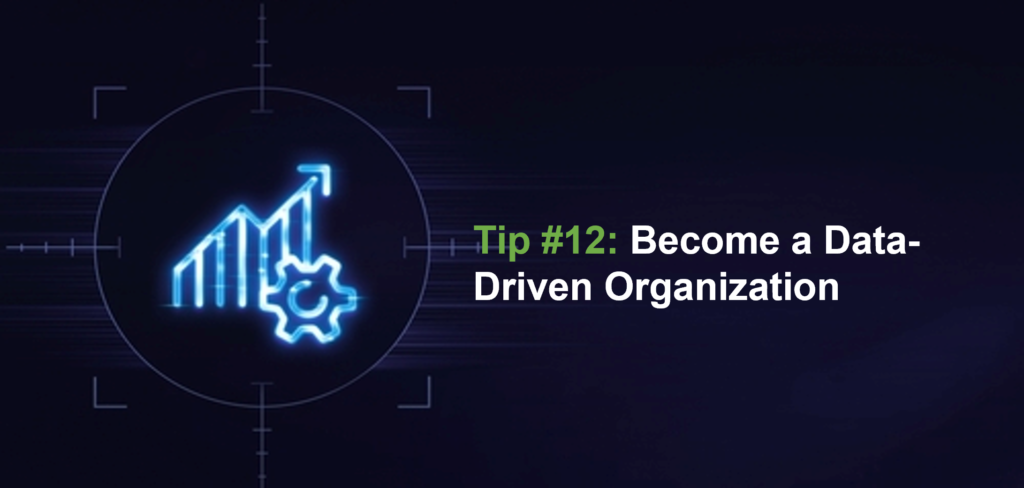Become a Data-Driven Organization

As business owners, we’re always pursuing the holy grail of growth. Building a better, more profitable business drives each of us to work hard at what we went into business to do. Unfortunately for many of us, while we work really hard pursuing our growth goals, we don’t always work smart. For example, there’s a way to double the chances of hitting your growth targets this year, but I’m willing to bet that most of you aren’t utilizing it. What’s that way, you ask? (Hint: It’s the title of this article!)
Ninety percent of small and medium-sized businesses (SMBs) set growth targets, but only 10% of those businesses are tracking their progress towards their growth targets, according to a survey conducted by Censuswide. Of the businesses that tracked their progress, 96% hit some of their targets, and 41% hit all of them. However, only 23% of the companies that didn’t track their goals hit either all or some of their growth targets.
What Does it Mean to be a Data-Driven Organization?
Being a data-driven organization simply means that you analyze data generated by your business activities to inform your decision-making. It involves collecting, analyzing, and interpreting data to gain insights into business performance, market trends, and customer behavior. You can optimize your operations, identify new growth opportunities, and increase revenue by making data-driven decisions. If you aren’t using data to inform your decision-making, you’re primarily making decisions based on your assumptions. You remember that old saying about assumptions, don’t you?
The insights you gain from analyzing and interpreting data can lead you to profoundly rethink some of the ways you’ve approached your business. One example of this from my experience stems from my staffing company. One of our strategic advantages is that the contingent workers we place have a much higher persistence rate (i.e., they stay longer in their jobs) than the industry average. We invest a lot in coaching and other supports for our contingent workers, so that isn’t a surprise—it’s the goal. Until recently, our coaching and support strategy had three facets to it. One of those facets involved using a highly paid resource who was involved in multiple touchpoints of the coaching and support process. We had assumed that this particular facet of our strategy was absolutely critical to the success of our persistence efforts and therefore invested heavily in it. However, when I reviewed the data, it was crystal clear that this facet had absolutely no impact on persistence. None at all! Knowing this allowed us to eliminate that facet of our strategy and redirect resources into areas that do correlate with increased persistence.
So, how can your business become more data-driven? Here are a few ideas:
- Identify your key performance indicators (KPIs):Identify the most important metrics for your business. I highly recommend that you look specifically for KPIs that are relevant to your industry. Every business should track certain all-purpose KPIs, but you also need to track specific KPIs for your industry. The KPIs I track for my ethics and staffing businesses are very different.
- Collect data: Where you source the data you collect for your KPIs will differ based on the KPIs. For example, you could use tools like Google Analytics or your CRM software for some KPIs. For other data, you might use client surveys or other methods.
- Analyze data: Use data analysis tools to identify patterns and trends in your data. This can help you identify areas of your business that need improvement and opportunities for growth.
- Use data to inform decision-making: Before making decisions, ask, “What is the data telling us? Or “Does the data support this course of action?”. Use the insights you gain from data analysis to inform your business decisions.
- Continuously monitor and adjust: Regularly monitor your data to ensure your business is on track to meet its goals.
Becoming data-driven is essential for small businesses looking if you want to achieve growth and success consistently. Collecting, analyzing, and using data to inform decision-making can give you critical insights into every aspect of your business. Take the time to become data-driven, and you’ll be well on your way to achieving your growth targets.
